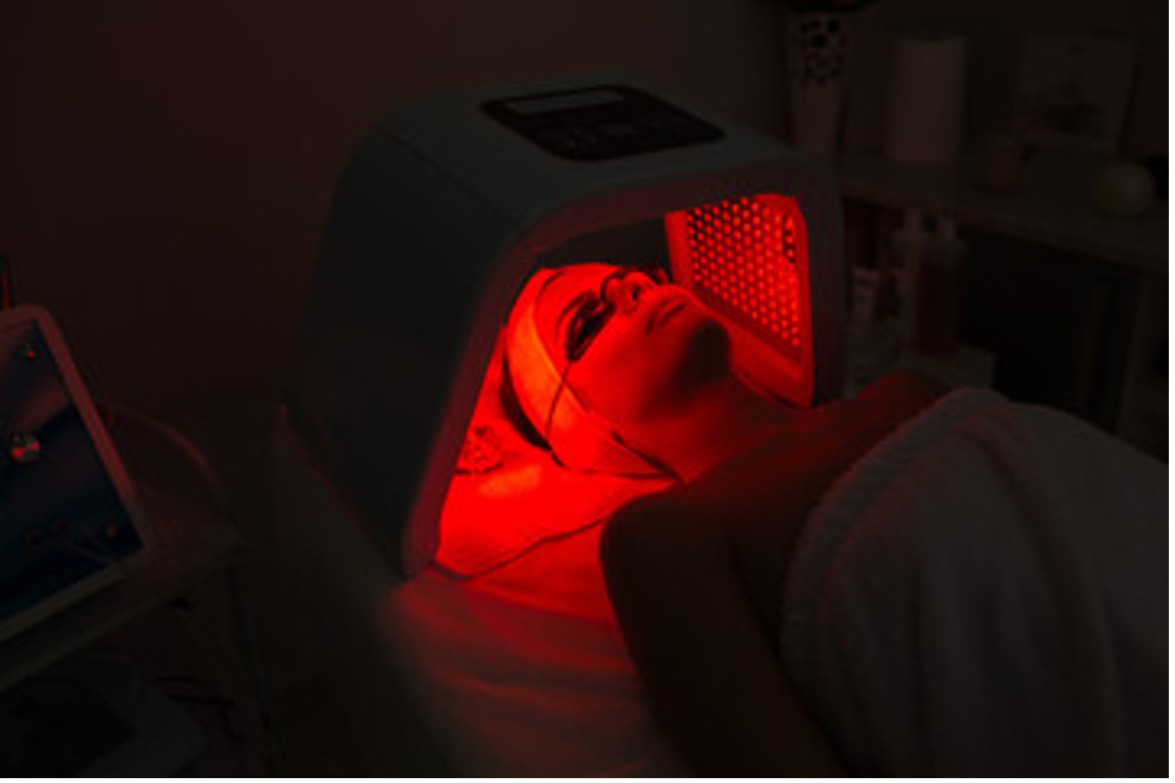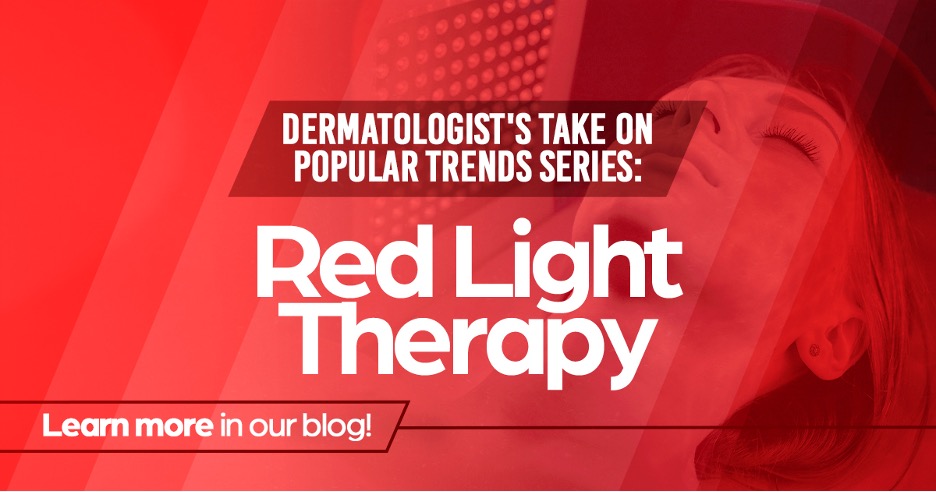Do we give red light therapy the green light? Due to its benefit to the skin, red light therapy devices have been used in dermatology offices, plastic surgery offices, and wound care centers for quite some time. More recently, it’s gained the attention of skin enthusiasts everywhere. For our latest dermatologists’ take on popular trends series, join us as we learn about the potential benefits and dangers of at-home red light therapy devices in conversation with our very own Dr. Fricke!
What is red light therapy?
Dr. Fricke: Red light therapy has gained much momentum in recent years. As we all know, ultraviolet light negatively affects the skin, as it can damage cellular DNA and break down structural proteins that support the skin. But ultraviolet light is very different from red light. It has a shorter wavelength and sits on a different part of the electromagnetic spectrum. While ultraviolet light damages the skin, red light and near-infrared light (next to the red light on the electromagnetic spectrum) are quite regenerative and have positive effects.
The red light was initially touted for its ability to accelerate wound healing. Still, in recognizing the ability of red light, they also noticed that it reduces redness and inflammation and helps with skin rejuvenation overall by reducing fine lines and wrinkles and improving elasticity. This process of red light and near-infrared light inducing positive effects on the skin is known as photobiomodulation (PBMT). The most beneficial wavelengths are 633 nm for the red light and 830 nm for near-infrared light.

What are the benefits of red light therapy?
Dr. Fricke: Red light therapy has many potential benefits. For example, it can benefit those with rosacea, which involves chronic, low-grade skin inflammation. It helps by reducing inflammation and redness. It also aids in wound healing and overall recovery post-procedure. Additionally, it has also been shown to result in a noticeable improvement in fine lines, wrinkles, smoothness, and skin texture. While it can be used for anti-aging purposes, the improvements can be subtle and often seen over three to six months. This makes it a good option for maintenance, as it will not provide the same degree of improvement seen with neurotoxin (Botox, Dysport), fillers, or laser resurfacing. Lastly, it’s known to help women during pregnancy when often many treatments are off-limits, such as neurotoxin injections and topical retinoid creams. However, it’s essential to always consult with your physician before using while pregnant.
Is red light therapy safe to use?
Dr. Fricke: Red light therapy is considered safe. Treatment with red and near-infrared light does not generate as much heat as other types of light treatments (such as blue light) and therefore carries a lower risk of adverse effects such as hyperpigmentation. However, it can damage your eyes, so if you are using an at-home device, it must be appropriately designed with eye safety in mind. It’s also not recommended in patients with photosensitive disorders such as lupus or polymorphous light eruption.
How often should treatment be done?
Dr. Fricke: Studies have shown that using an in-office red light treatment for 20 minutes 3 times a week can result in a noticeable improvement in fine lines, wrinkles, smoothness, and skin texture. However, the frequency of use differs between in-office and at-home treatments. Due to the fact that the intensities of the red light treatment can vary.
How do you rate this on a glow-up potential scale? (0-5)
Dr. Fricke: 3.5 – Red light therapy, when used correctly and safely, is an excellent option for those who want modest improvements in fine lines, wrinkles, and skin elasticity. As well as for pregnant women seeking anti-aging treatments and when used as a maintenance treatment after procedures like Botox/Dysport, fillers, or laser resurfacing. (Of note, it’s essential to be diligent with sun protection so that all the new collagen you’re synthesizing doesn’t get degraded by UV light exposure!)

We want to take your skincare to new heights at Alamo Heights Dermatology! Spring into action and learn more about our services. Visit our website or contact us at (210) 255-8447 today to learn more – your skin will thank you!
Resources:


